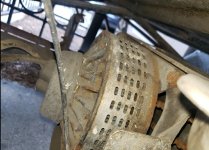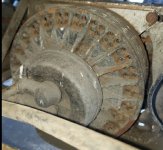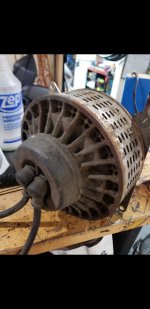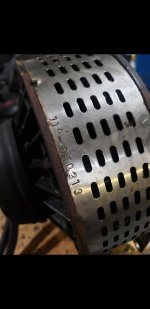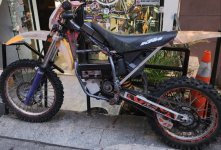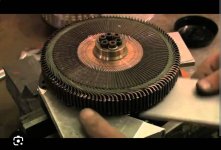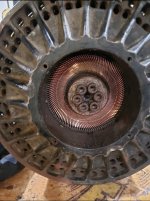matt912836
100 W
Taken off of a cycles maximus pedicab being powered by a 12v 275a curtis controller.
Can't find much info other than its a lynch motor. It has no labels or anything.
Trying to narrow down which one it is. I'm thinking its most likely an LEM170 or LEM200, what are some things I can do to identify specifics?
The diameter is ~8 inches and this thing has some serious heft to it.
I'm thinking first apply 12v dc voltage to it and somehow measure what rpm i get at the output. That way I'm able to calculate rpm/voltage, but any other ideas?
Also, its clearly in bad shape, it was taken from an abandoned pedicab which was literally left outside for years. You can see blue corrosion on the inside clear as day from the outside. Still spins freely with absolutely zero resistance. Is this even repairable or worth repairing if it is?? From my research this is one of the most efficient dc motor designs and this motor should be able to do 10kw+ reliably... I will try to get much more pics later.
For a controller im thinking of a CL350, since it can do both brushless and brushed motors.
Can't find much info other than its a lynch motor. It has no labels or anything.
Trying to narrow down which one it is. I'm thinking its most likely an LEM170 or LEM200, what are some things I can do to identify specifics?
The diameter is ~8 inches and this thing has some serious heft to it.
I'm thinking first apply 12v dc voltage to it and somehow measure what rpm i get at the output. That way I'm able to calculate rpm/voltage, but any other ideas?
Also, its clearly in bad shape, it was taken from an abandoned pedicab which was literally left outside for years. You can see blue corrosion on the inside clear as day from the outside. Still spins freely with absolutely zero resistance. Is this even repairable or worth repairing if it is?? From my research this is one of the most efficient dc motor designs and this motor should be able to do 10kw+ reliably... I will try to get much more pics later.
For a controller im thinking of a CL350, since it can do both brushless and brushed motors.


